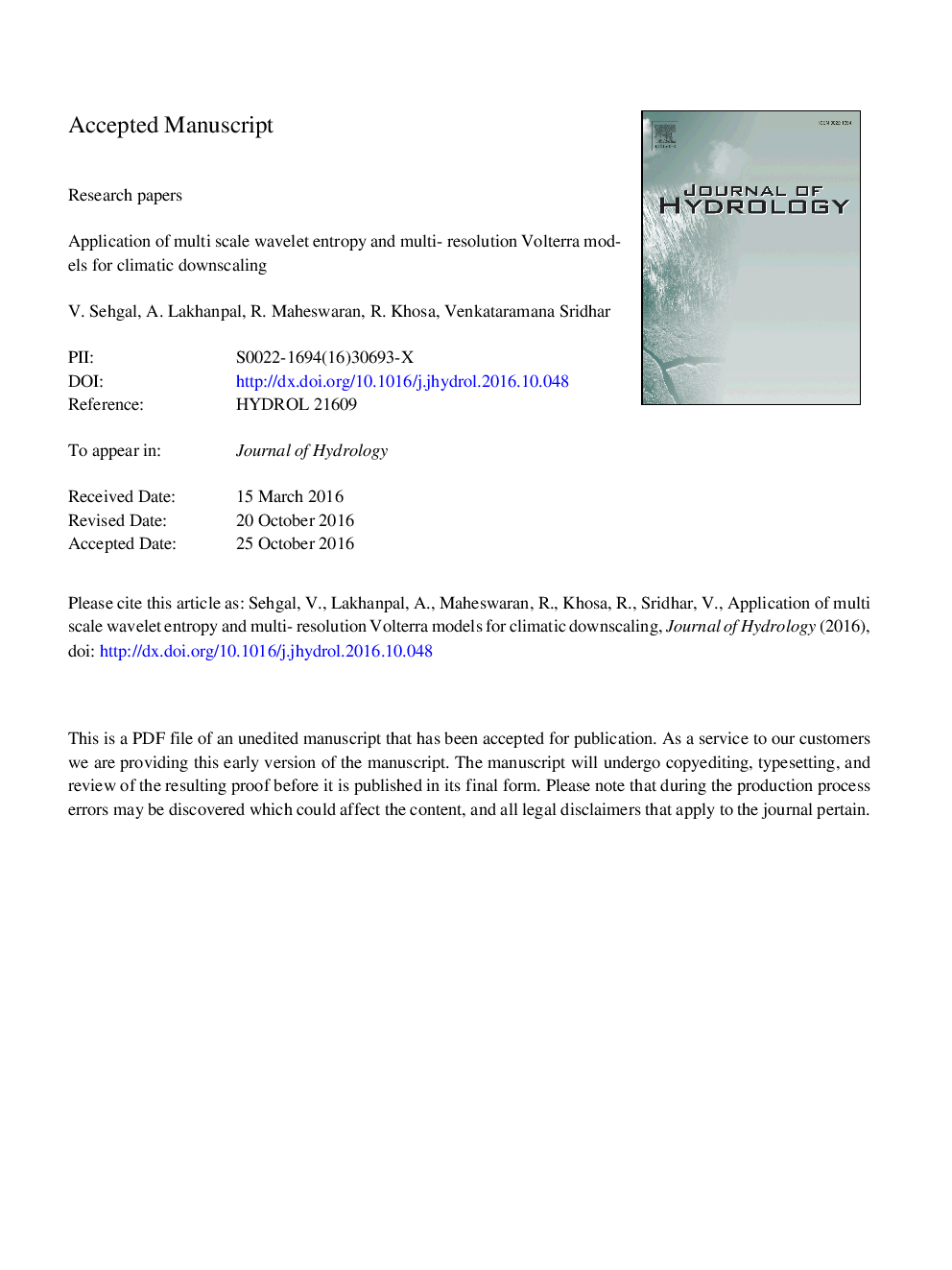| Article ID | Journal | Published Year | Pages | File Type |
|---|---|---|---|---|
| 8895221 | Journal of Hydrology | 2018 | 60 Pages |
Abstract
This study proposes a wavelet-based multi-resolution modeling approach for statistical downscaling of GCM variables to mean monthly precipitation for five locations at Krishna Basin, India. Climatic dataset from NCEP is used for training the proposed models (Jan.'69 to Dec.'94) and are applied to corresponding CanCM4 GCM variables to simulate precipitation for the validation (Jan.'95-Dec.'05) and forecast (Jan.'06-Dec.'35) periods. The observed precipitation data is obtained from the India Meteorological Department (IMD) gridded precipitation product at 0.25 degree spatial resolution. This paper proposes a novel Multi-Scale Wavelet Entropy (MWE) based approach for clustering climatic variables into suitable clusters using k-means methodology. Principal Component Analysis (PCA) is used to obtain the representative Principal Components (PC) explaining 90-95% variance for each cluster. A multi-resolution non-linear approach combining Discrete Wavelet Transform (DWT) and Second Order Volterra (SoV) is used to model the representative PCs to obtain the downscaled precipitation for each downscaling location (W-P-SoV model). The results establish that wavelet-based multi-resolution SoV models perform significantly better compared to the traditional Multiple Linear Regression (MLR) and Artificial Neural Networks (ANN) based frameworks. It is observed that the proposed MWE-based clustering and subsequent PCA, helps reduce the dimensionality of the input climatic variables, while capturing more variability compared to stand-alone k-means (no MWE). The proposed models perform better in estimating the number of precipitation events during the non-monsoon periods whereas the models with clustering without MWE over-estimate the rainfall during the dry season.
Keywords
Related Topics
Physical Sciences and Engineering
Earth and Planetary Sciences
Earth-Surface Processes
Authors
V. Sehgal, A. Lakhanpal, R. Maheswaran, R. Khosa, Venkataramana Sridhar,
